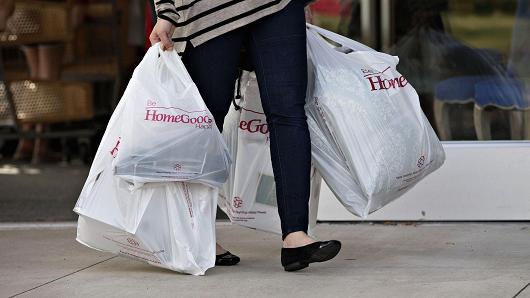Off-price retailer TJX has been stealing apparel sales from department stores for several years. Now, it has another category in its crosshairs: home decor.
The parent company of T.J. Maxx and Marshalls told investors on Wednesday that it will open a new line of home goods stores this year. The concept will be complementary to its existing chain of HomeGoods shops that sells pillows, lamps and accents.
On a call with analysts outlining its fiscal fourth-quarter earnings report, TJX CEO Ernie Herrman said the company will open four U.S. stores under its new nameplate this year.
Though Herrman was mum on additional details — including the name of the forthcoming chain — he said the strategy is to encourage customers to shop at both these new stores and its existing HomeGoods locations. That strategy is similar to the approach it’s taken with T.J. Maxx and Marshalls.
The new concept will also allow TJX to enter new markets and sell products that it hasn’t currently penetrated with its HomeGoods footprint, Herrman said.
“We’ve been testing many of those home categories for the last year, year and a half [and] that’s allowing us to plant the seeds and feel a high degree of confidence on what this store can do for business,” Herrman said.
A spokeswoman for TJX declined to share additional details.
The new chain is just one way TJX is taking larger aim at the home goods category, which represents its biggest white space in the U.S., Herrman said. The retailer will also open roughly 80 new HomeGoods stores in the U.S. this year, an acceleration from last year’s 53 openings.
At the end of its recently completed fiscal year, TJX operated 579 HomeGoods stores in the U.S. That pales in comparison to its domestic fleet of 1,186 T.J. Maxx and 1,035 Marshalls stores.
TJX’s increased focus on the home goods category could spell further trouble for department store and home furnishings chains, which are already under pressure from up-and-coming brands like Wayfair and At Home.
A recent study by Kantar Retail found that despite HomeGoods’ smaller footprint, more female primary household shoppers have looked for home decor at one of its stores than at J.C. Penney, Macy’s or Sears.
Home accounted for 12 percent of J.C. Penney’s sales in 2015, while home and miscellaneous items represented 16 percent of sales at Macy’s that year, according to 10-K filings with the Securities and Exchange Commission.
HomeGoods’ net sales increased nearly 13 percent to $1.3 billion in the fiscal fourth quarter. Those results helped lift TJX’s sales by 6 percent, to $9.5 billion.

